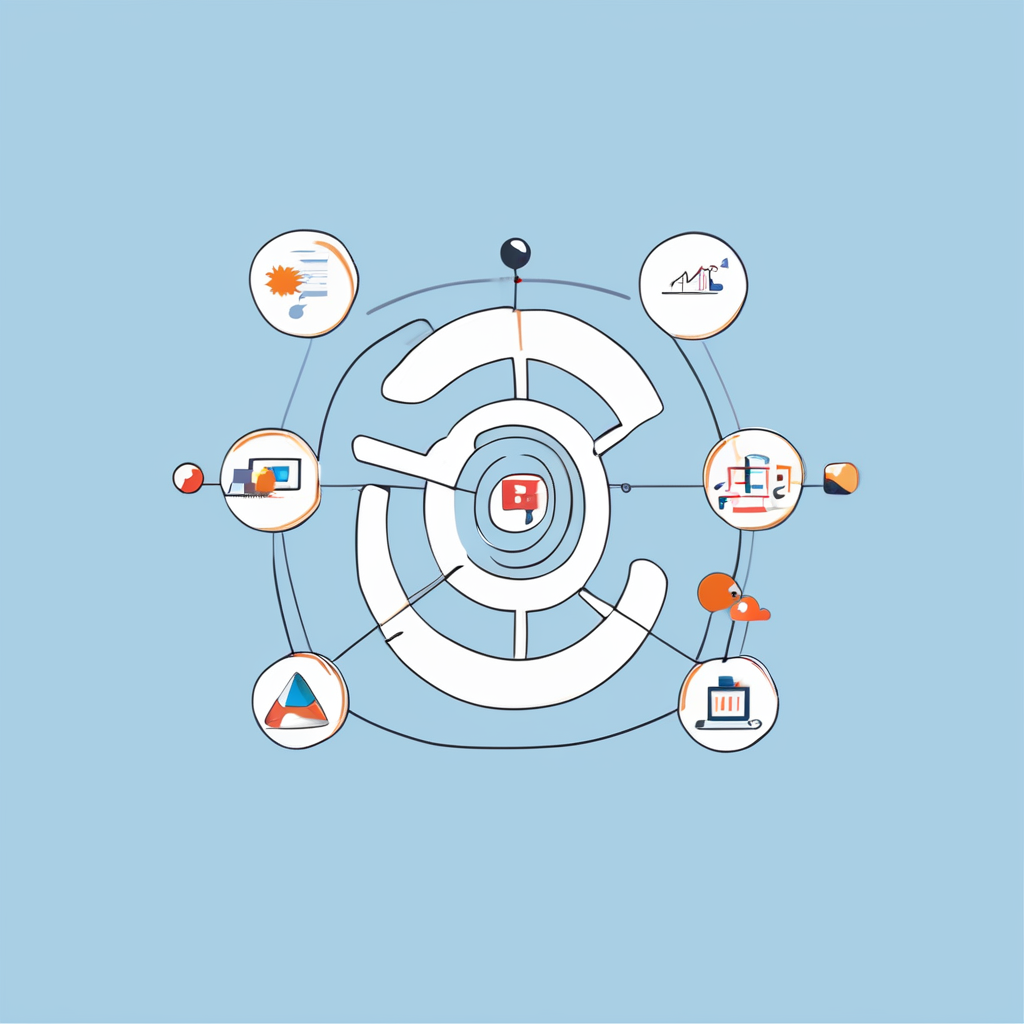Introduction to AI in Tax Compliance
The impact of AI on tax compliance is increasingly significant, revolutionising how businesses and policymakers address tax obligations. As AI technologies become more integral, understanding their role is crucial. These technologies streamline tax processes by automating calculations and simplifying data analysis.
AI technologies, such as machine learning and natural language processing, enhance accuracy, reducing human error in tax reporting. Their ability to analyse massive datasets means businesses gain insights into financial trends and anomalies, reinforcing compliance efforts. This is vital for both small businesses and large corporations, fostering a more transparent tax environment.
Also to see : Revolutionizing uk retail supply chains: how ai is supercharging efficiency and transforming operations
For policymakers, AI presents opportunities to enhance regulatory frameworks and develop innovative tax strategies. The continuous evolution of these strategies is shaped by current trends in the UK, where AI is actively utilised in detecting tax fraud and assessing legal compliance. Policymakers are tasked with balancing technological advancements and ethical considerations while ensuring tax legislation remains robust and fair.
In summary, AI’s influence on tax compliance is transformative. Its integration into the sector is a testament to its potential to streamline operations and enhance regulatory practices. Businesses and policymakers must therefore embrace and adapt to these AI-driven trends to optimise tax compliance in the modern age.
Also read : Revamping mental health care in the uk: harnessing ai innovations for superior patient support
Current Applications of AI in Tax Compliance
In today’s digitally transforming world, AI Tax Compliance Applications are revolutionising how businesses approach tax obligations. Automated tax filing systems, which utilise AI to streamline processes, are gaining traction. These systems efficiently handle data analysis, minimising human error and ensuring timely submissions. By processing vast amounts of transactional data, they help businesses stay on top of their tax duties with increased accuracy.
Automated Tax Filing Systems
Businesses currently leverage AI-driven software solutions to automate tax filing, reducing the burden on human resources. These systems offer real-time validation of data and ensure compliance with ever-changing regulations.
Predictive Analytics for Compliance Risks
Predictive analytics, a powerful AI application, assesses compliance risks before they become problematic. By analysing patterns in financial data, businesses can identify potential red flags and implement preventive measures. This proactive approach enhances business efficiency by avoiding costly fines.
Natural Language Processing in Tax Regulations
Furthermore, AI-powered natural language processing assists in decoding complex tax regulations. For instance, AI tools can automatically interpret and categorize legislative changes, making it simpler for companies to adapt to new policies. This application of AI supports businesses by streamlining their compliance efforts.
Overall, AI’s integration into tax compliance signifies a major step towards increased efficiency and accuracy.
Benefits of Incorporating AI into Tax Compliance Processes
Incorporating AI into tax compliance processes offers numerous advantages, significantly transforming how businesses handle taxation matters. Increased accuracy is one of the most remarkable benefits—AI’s ability to process vast amounts of data ensures fewer mistakes and minimal human error. Taxation regulations are notoriously complex, and AI systems excel at interpreting and applying rules consistently, reducing the chances of oversight.
Another noteworthy advantage of AI in tax compliance is cost savings coupled with efficiency improvements. Traditional methods require substantial manpower and time, translating into higher costs. AI automates these processes, allowing teams to allocate resources more effectively, thereby minimizing expenditure. The enhanced speed at which tasks are completed not only cuts costs but also streamlines operations, contributing to overall efficiency.
AI’s impressive data processing capabilities also mean enhanced data analysis, allowing businesses to make more informed decisions. By identifying patterns and trends within financial data, AI provides insights that were previously unattainable through manual processes. These insights afford companies a competitive edge by enabling them to proactively address tax obligations and optimize financial strategies.
Integrating AI in tax compliance serves as a powerful strategy for staying ahead in an ever-evolving regulatory landscape.
Challenges and Risks of AI in Tax Compliance
Exploring the risks of AI in tax compliance reveals a landscape filled with both opportunities and hurdles.
Data Privacy Concerns
One key challenge is maintaining data privacy. With AI systems handling vast volumes of sensitive financial data, there is a heightened risk of data breaches. Such breaches can lead to severe financial and reputational damage for organisations. It is crucial that companies implement robust data protection measures to safeguard against these vulnerabilities.
Dependence on Technology
Another challenge is the growing dependence on technology. As AI systems become more integrated into tax compliance processes, organisations may find themselves overly reliant on these tools. This dependence could result in significant disruption if technological failures occur or systems are compromised. Therefore, companies must balance their use of AI with traditional methods to mitigate potential disruptions.
Compliance with Regulatory Frameworks
Finally, navigating the landscape of regulatory frameworks is essential. The dynamic nature of tax regulations demands that AI systems are continuously updated to remain compliant. Failing to do so could result in penalties and non-compliance issues. Thus, it is vital for businesses to stay informed about regulatory changes and ensure that their AI solutions are up-to-date, aligning with the latest compliance requirements.
Future Developments in AI and Tax Compliance
As we step into the future, AI advancements in tax compliance are poised to revolutionise the field. The potential for these technologies to enhance efficiency and accuracy in tax reporting is immense. AI systems are expected to evolve, integrating more robust algorithms capable of processing complex tax scenarios with ease. This will empower businesses and tax professionals to make more informed decisions, reducing errors and saving time.
Predictions suggest that the regulatory landscape will transform to accommodate these technological shifts. Authorities may develop adaptive frameworks that balance innovation with compliance oversight. Such changes aim to harmonise AI advancements with statutory requirements, ensuring both are aligned for optimal functionality.
Continuous learning and adaptation are crucial as AI’s role in tax compliance expands. AI systems will need to update in real-time to adapt to new tax laws and regulations. This dynamic ability ensures that AI remains a reliable partner for tax planning and compliance.
Embracing these developments positions organisations to respond effectively to the evolving tax environment. By leveraging AI, companies can stay ahead of regulatory demands while capitalising on future opportunities in tax compliance.
Case Studies of Successful AI Integration in Tax Compliance
Exploring AI tax compliance case studies reveals the transformative impact of technology in various businesses. Each company experienced unique challenges and benefits as they integrated AI to streamline tax processes.
Company A’s Implementation and Results
Company A embraced AI tax compliance to address inefficiencies in their reporting system. By deploying machine learning algorithms, they achieved a significant reduction in processing time and errors, allowing them to maintain accuracy with less manual intervention. The improved system supported real-time updates, which facilitated better decision-making and compliance with evolving tax laws, exemplifying a success story in AI adoption.
Company B’s Challenges and Solutions
Conversely, Company B faced hurdles while integrating AI, notably in ensuring data security and system compatibility. By focusing on comprehensive training and robust encryption methods, they mitigated these issues. The adoption of AI not only resolved initial challenges but also enhanced data accuracy and compliance efficiency over time, illustrating effective problem-solving strategies.
Comparisons of Different Approaches
Comparing these real-world examples, it becomes evident that AI significantly benefits tax compliance by reducing errors and enhancing operational efficiency. Lessons learned from these case studies emphasize the importance of tailored AI solutions and continuous improvement efforts. Quantitative outcomes show that AI adoption leads to decreased processing costs and increased regulatory compliance, underscoring the practical advantages of AI in the tax sector.










